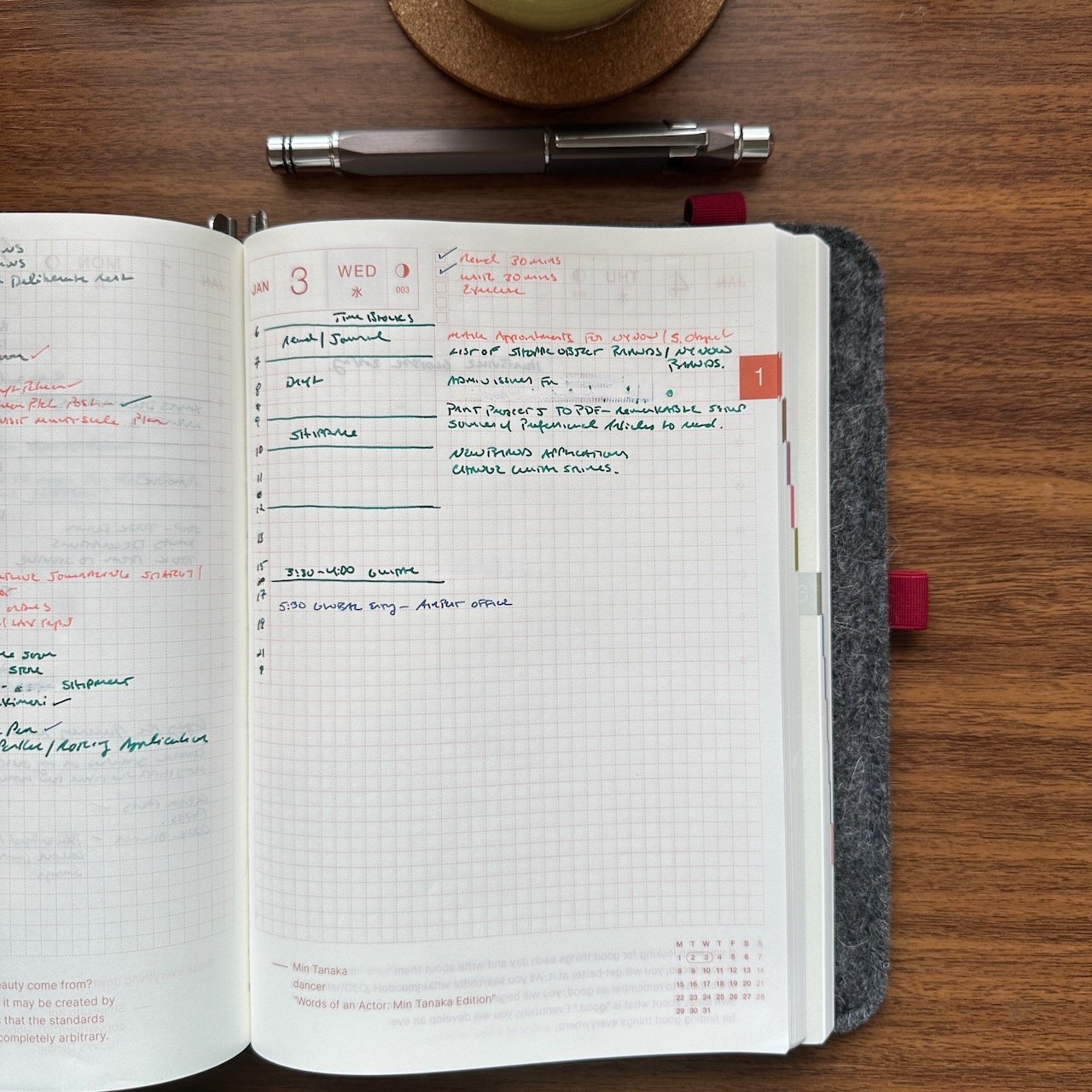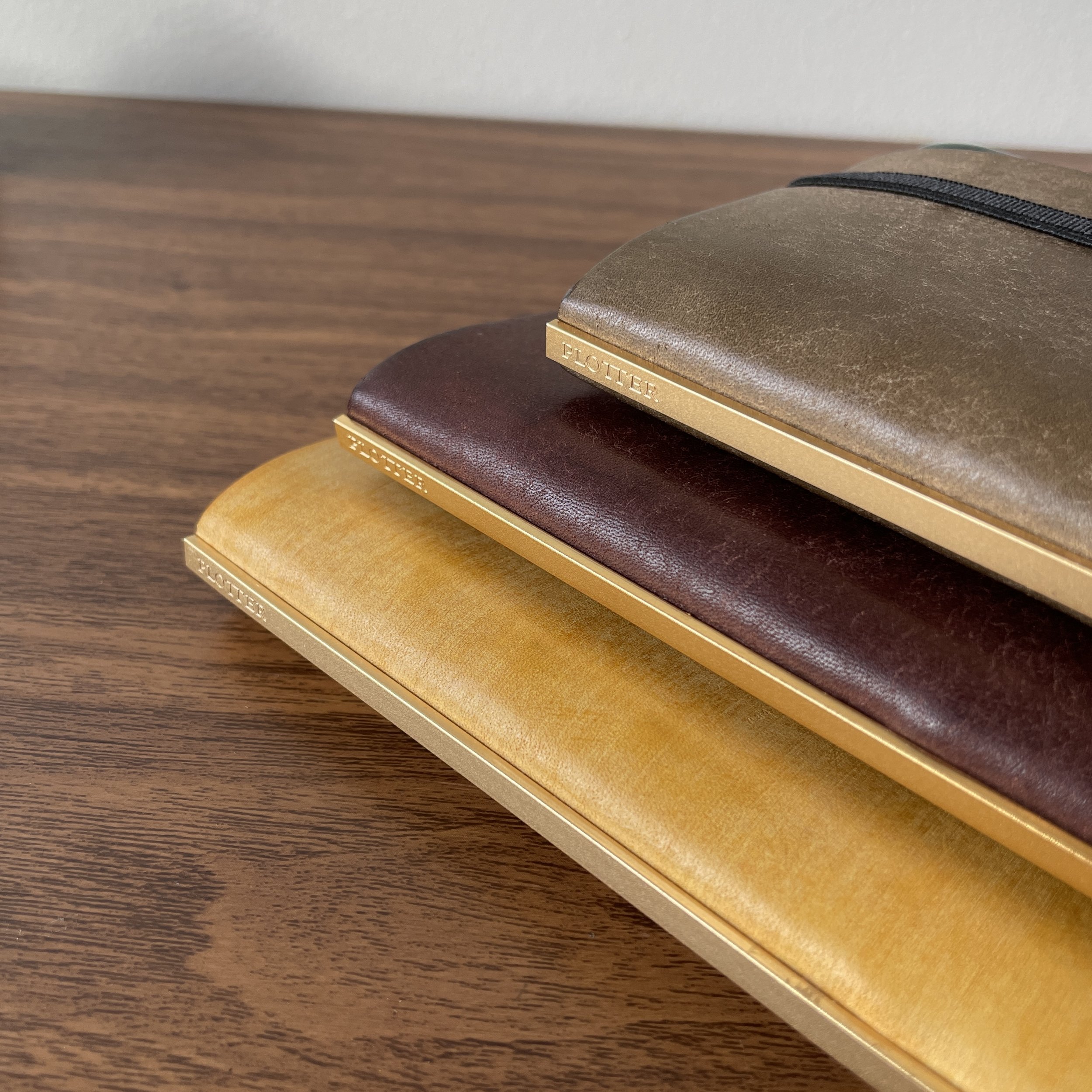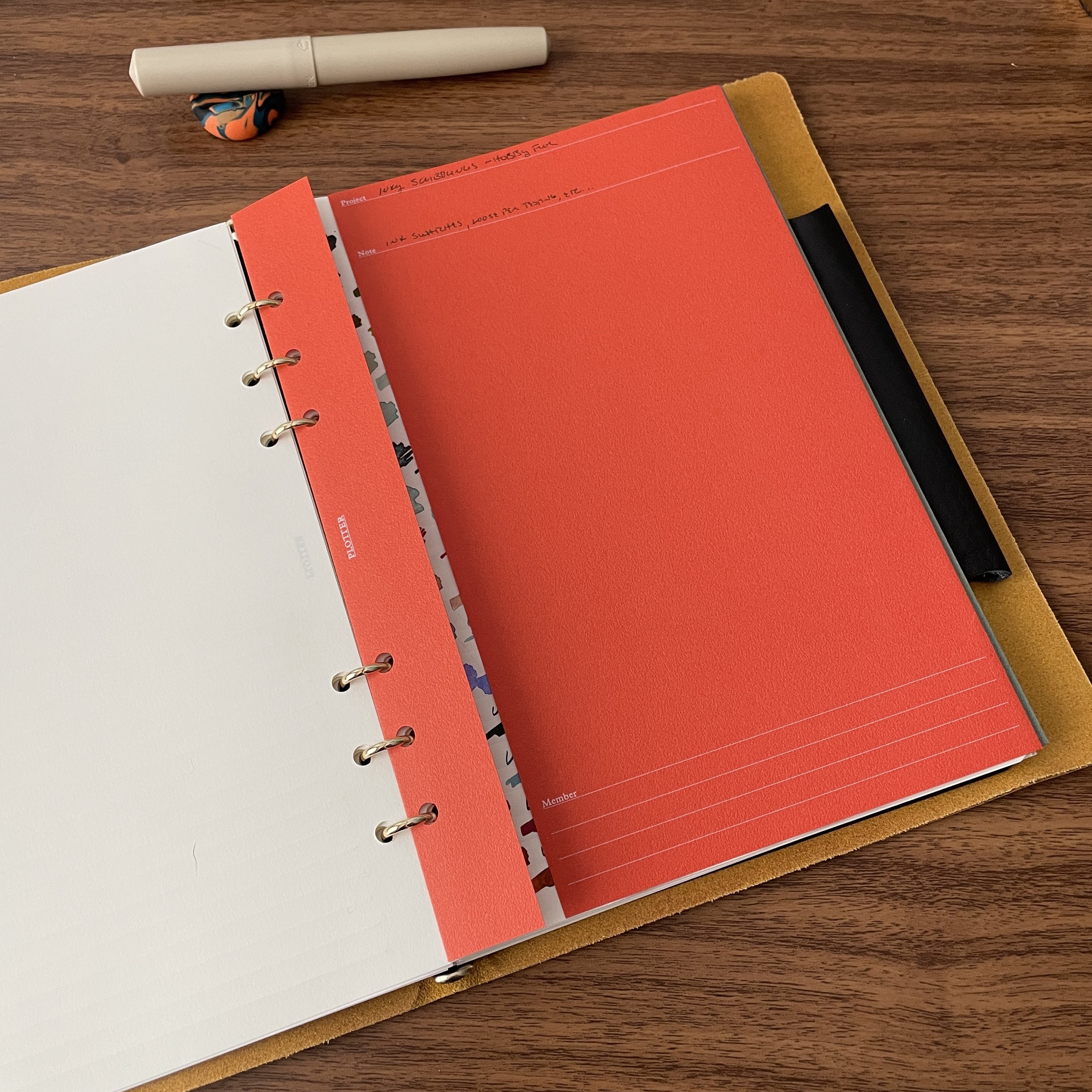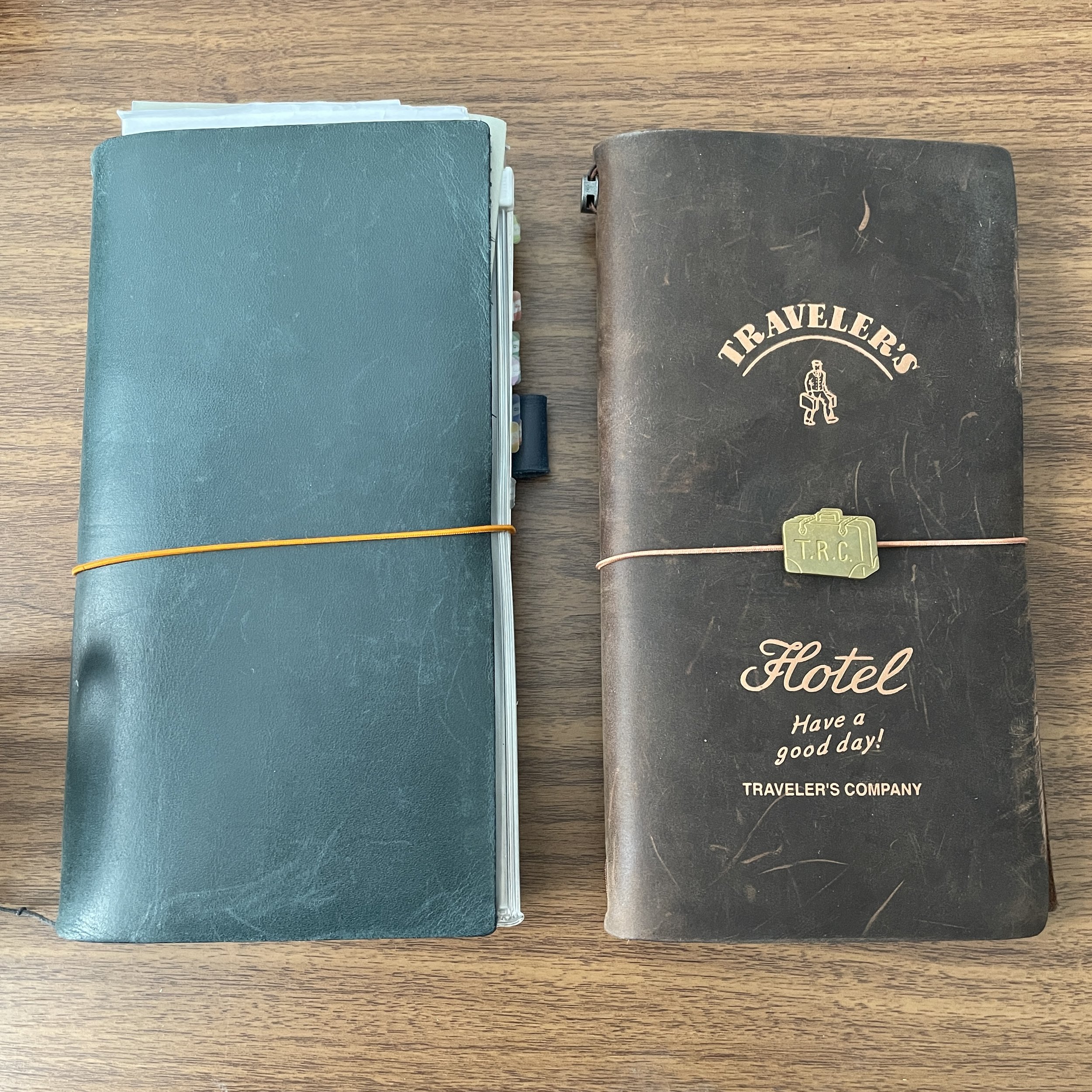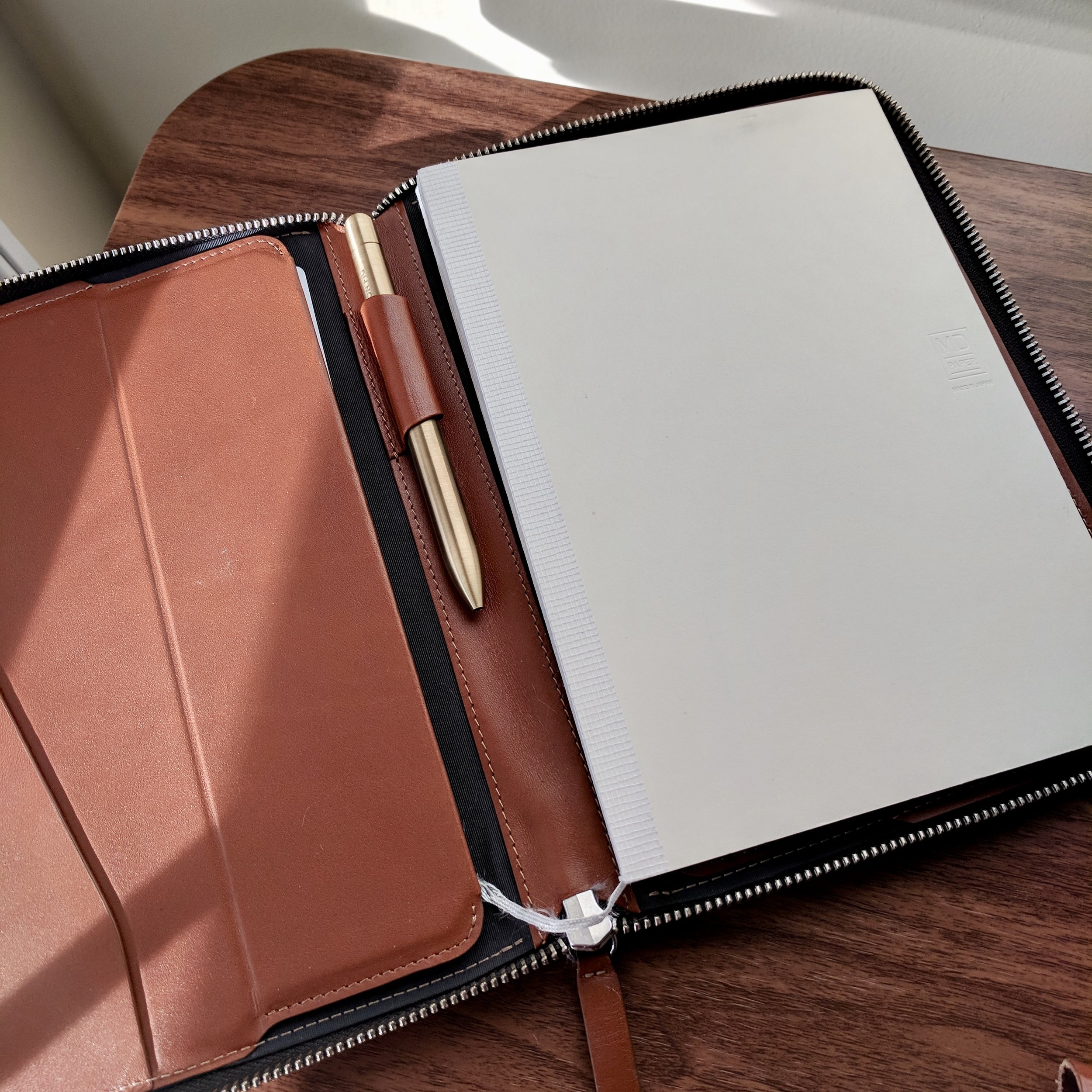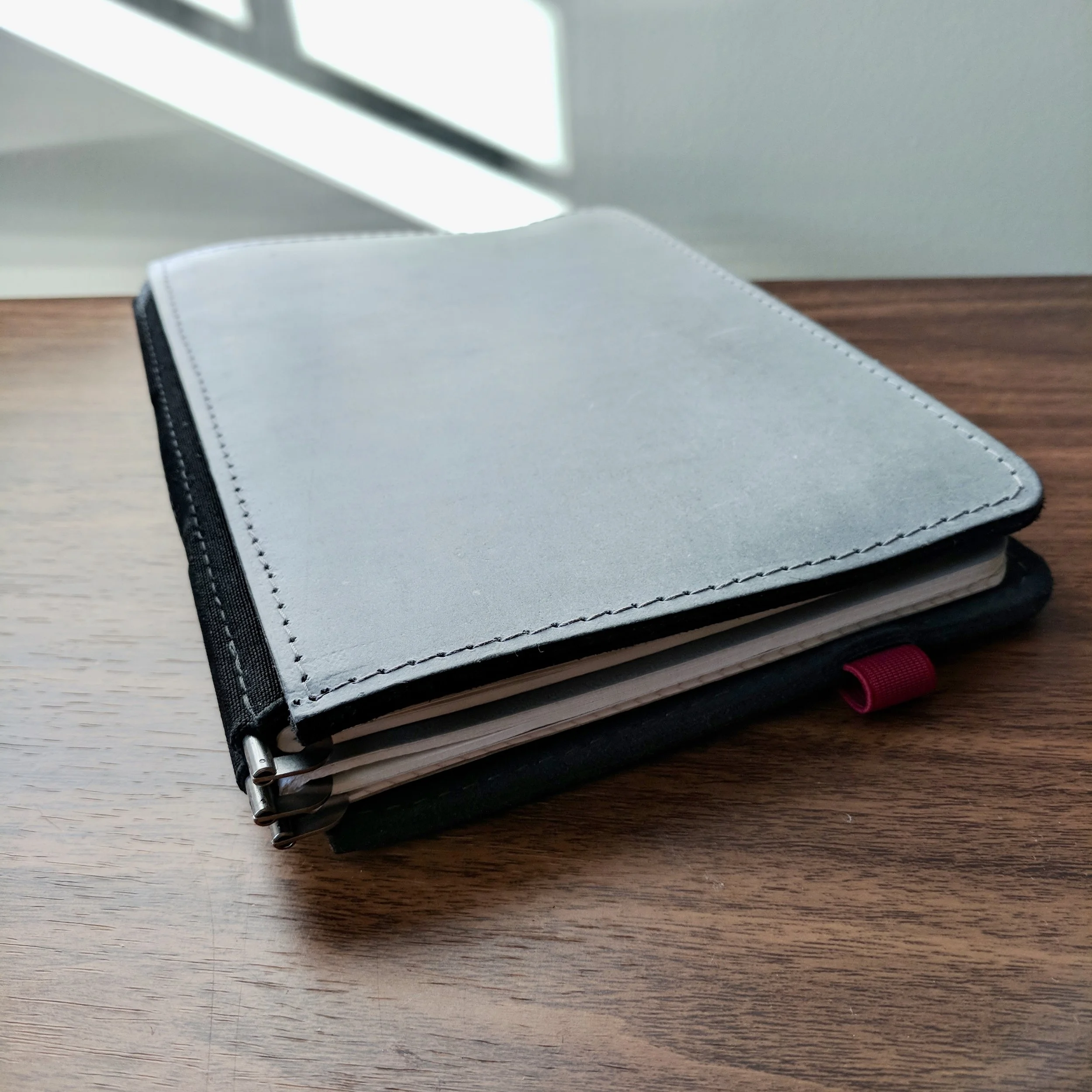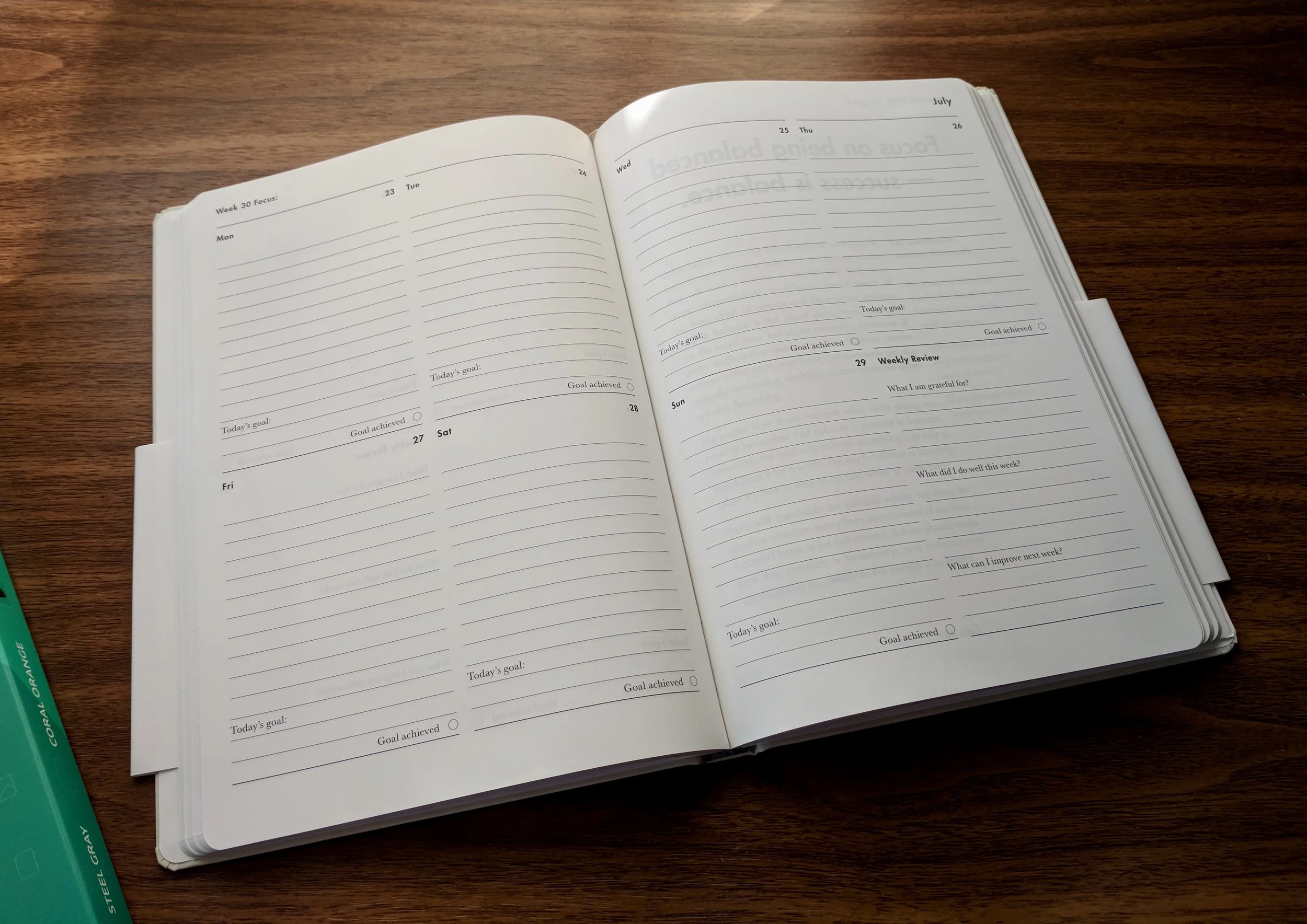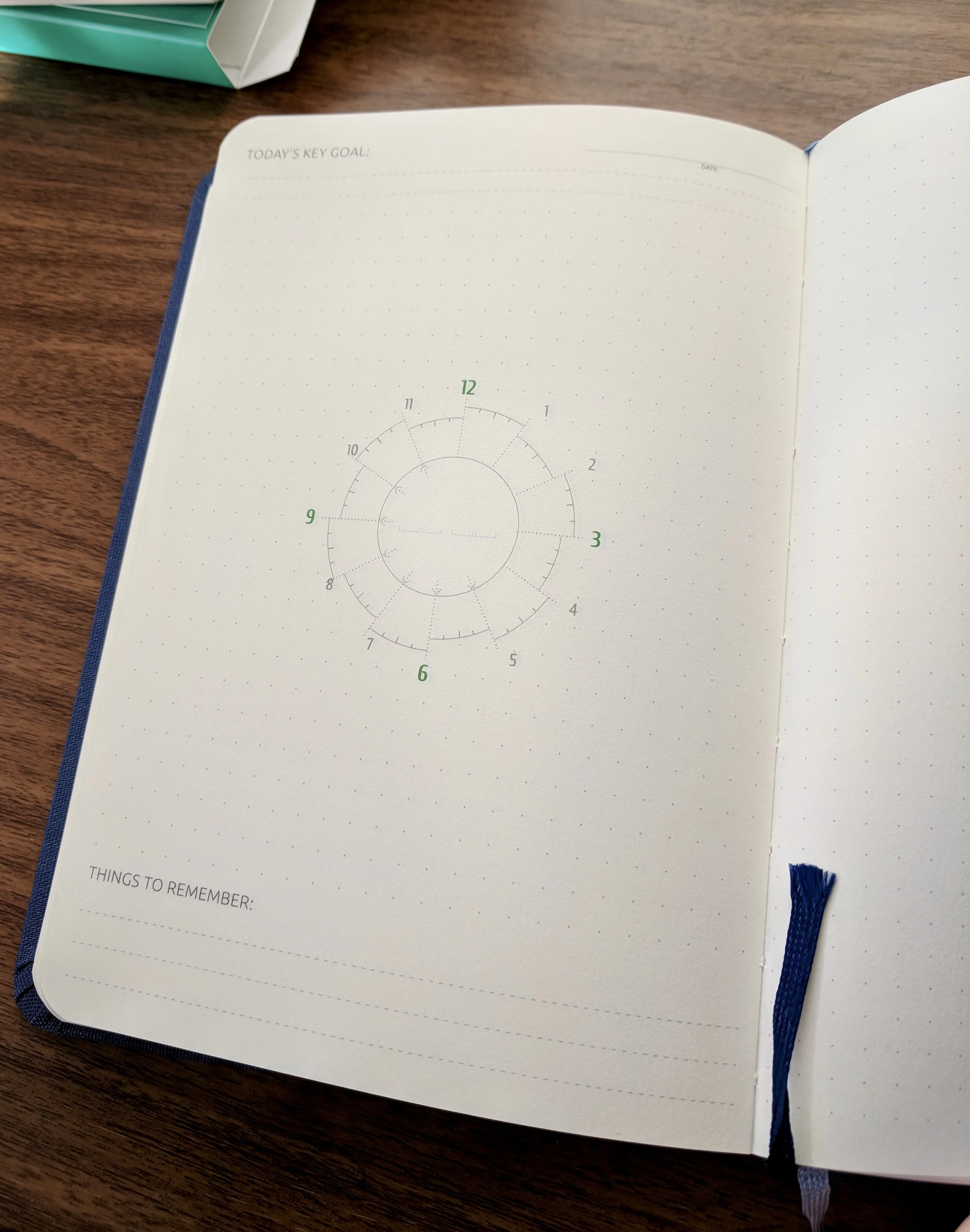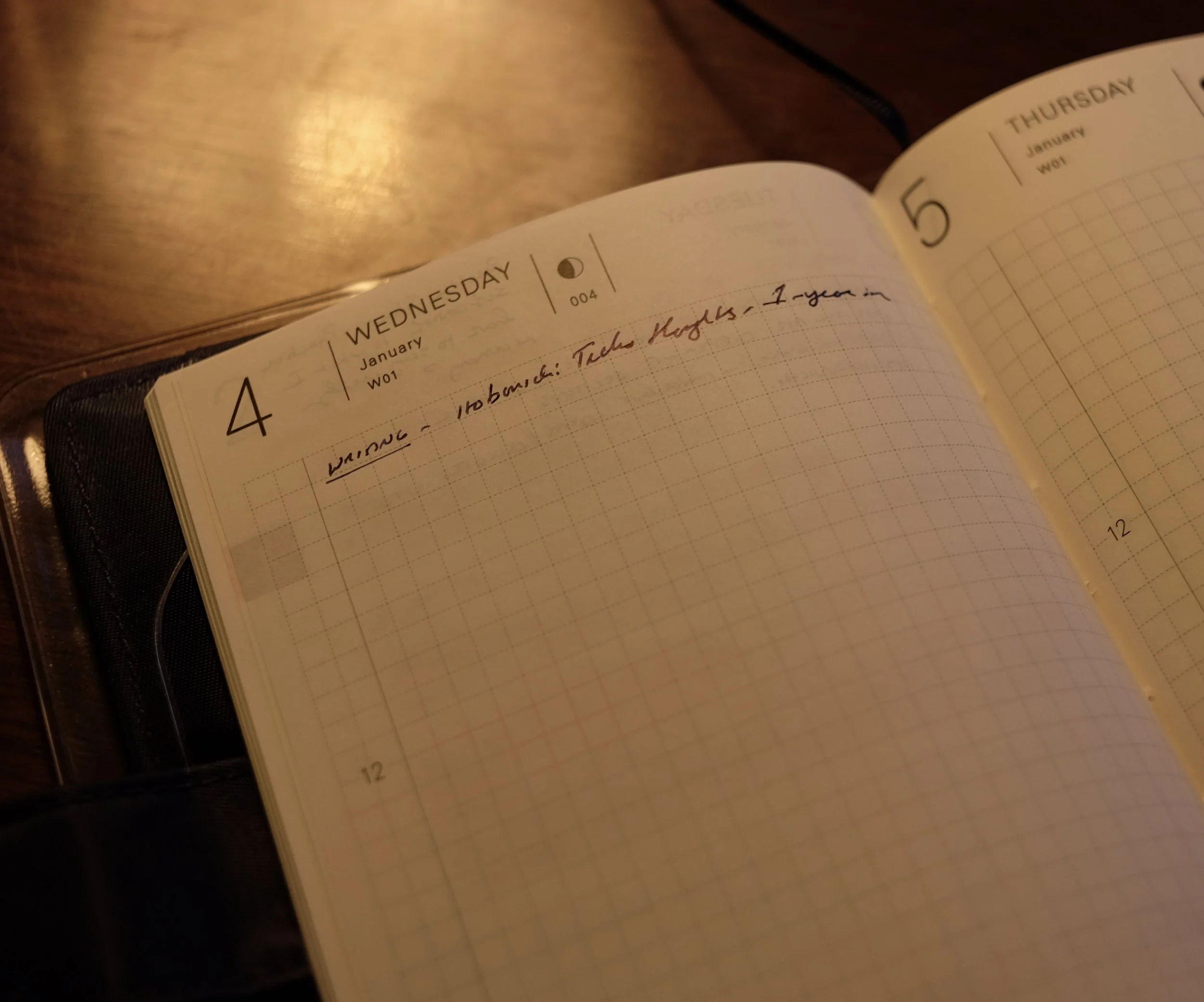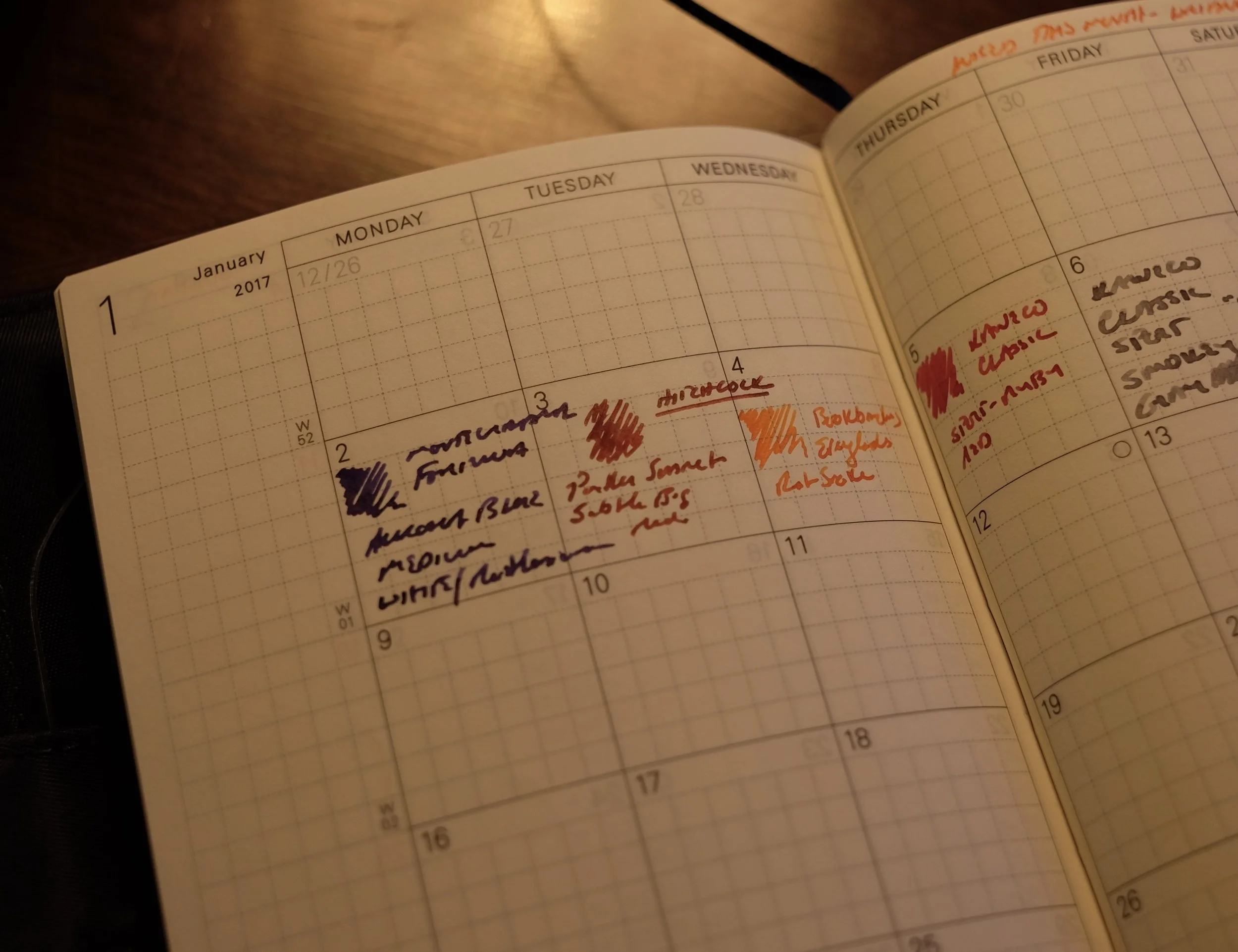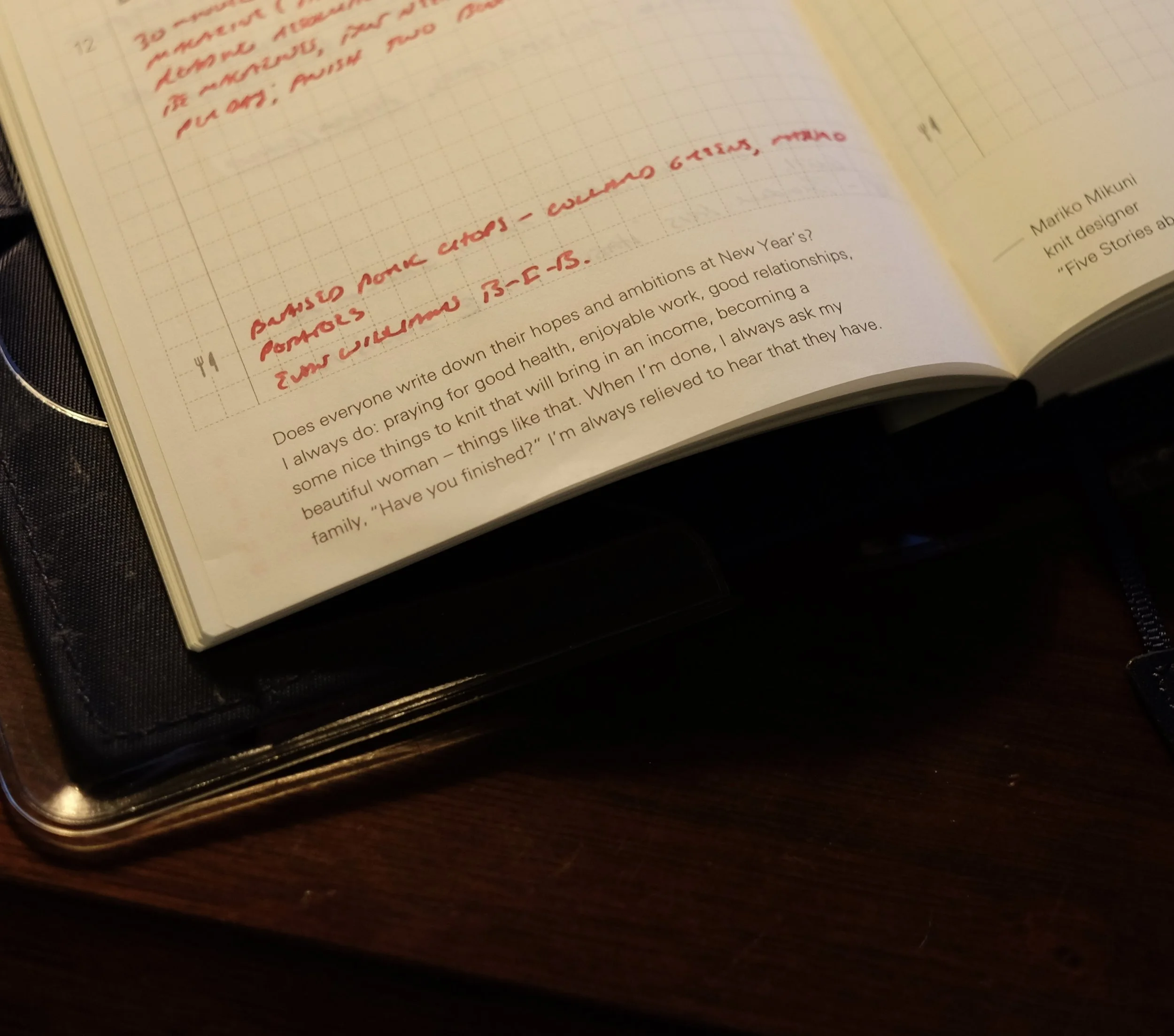As is natural in October, when planners go on sale for the coming year, I've been reviewing my current notebook setup and thinking about what I liked, what I disliked, and most importantly, how I can adjust my setup to better meet my needs in 2025. "Techo Kaigi" is a Japanese expression that refers to the figurative meeting you hold with yourself to address these issues. So, you can say I’ve been in back-to-back meetings with myself since October 1 trying to figure these things out!
I had chosen 2024 for an experiment of sorts: I would purchase three different styles of the popular Hobonichi planners: the Hobonichi Cousin A5 (Day-to-a-Page); Hobonichi Weeks Mega ("tall skinny" format week-to-a-page with room for notes); and a standard Hobonichi A6 (Day-to-a-page, to be used as a journal). While I didn't expect to reliably write in each of these on a daily basis, with the possible exception of the Cousin, I did manage to use each planner consistently for stretches of time, giving me a sense of what format and layout I liked best. After a full year with Hobonichi, I don’t think I’ll be making any permanent additions or substitutions to my usual carry. Here’s why:
My 2024 carry: Hobonichi A5 Cousin in my Roterfaden A5; Hobonichi Weeks in an aftermarket leather wallet/case; and a Hobonichi A6, which served as my journal and eventually went into it’s own leather cover.
What Can I Rule Out Immediately? The Classic A6 Hobonichi Techo
This decision isn't so much a reflection on the Hobonichi itself, but rather a realization that the A6 size doesn't work for me as either a planner or journal. A6 is a "between" size for me, meaning that it doesn't offer me enough space to fully flesh out my thoughts on a day, yet at the same time leaves too much white space if I simply want to micro-journal, jot a few thoughts down and/or habit track. I enjoy having a longer-form journal, but I have a lifetime supply of very nice standard A5 notebooks and composition books (including some gorgeous examples I've collected from Choosing Keeping and other shops) that I look forward to using.
Two Choosing Keeping Notebooks Purchased in London.
Daily Work Planner/notebook: I need more flexibility Than the HobonicHi Cousin Offers
Of the three planners I purchased for 2024, I used the Hobonichi Cousin A5 the most - everyday in fact. I loved having the full day on one page, with the time stamped left-hand column used for time-blocking alongside plenty of space to take notes. The downside? This thing is BIG. Even if I had opted for the Hobonichi Cousin Avec (which is the A5 Cousin broken into two 6 month segments), I still would find myself carrying around a hefty notebook filled with used pages that can't be disposed of or reorganized easily.
For 2025 I plan to return to a ring or disc-based system using either my William Hannah A5 or Plotter A5 binders. If I can find a compatible refill that features a day-to-a-page layout, I will go with Plotter, since I love the minimalist aesthetic and don't plan to carry more than a week or two of pages at a time. The benefit to me of both the Plotter and William Hannah systems is the ability to easily discard or archive pages that I don't need anymore, while also being able to insert blank pages if I need more space or want to keep additional papers and notes organized chronologically by day. If you have a recommendation for a day-to-a-page Plotter-compatible refill, please let me know! I’m looking.
That said, if you don't need this sort of page-level or daily flexibility, and don't mind carrying around a larger book, the Hobonichi Cousin is an incredibly versatile planner with at least three different calendar layouts (monthly, weekly, day-to-a-page) that offer planning, journaling, and habit-tracking functionality. The Cousin can definitely be your one-stop-shop, especially if you're comfortable keeping your work and personal life in a single book. I 100% recommend it as an excellent product, but it sadly doesn’t meet my exact needs.
The Standard Size Traveler’s Notebook is just a bit taller and wider than the weeks, while not sacrificing the tall/skinny format I love so much.
I'm Really Torn on the Hobonichi Weeks, But I'm Moving Back to a Traveler's Notebook
I loved the Hobonichi Weeks, but I'm probably still moving on. Why? I've been using this smaller notebook to track certain things such as exercise, reading, household tasks, and other random notes and observations that I want to keep organized in a "dated" format but separate from my work life. While I love the week-on-two pages layout, which is similar to the Traveler's Company "Weekly + Memo" format, I need just a touch more space as I found myself coming up short at times in the Hobonichi Weeks. As a result, I'll probably be returning to a Standard-size Traveler's Notebook, especially since that will give me the ability to add on additional notebooks and accessories (like pouches) to streamline my carry. I've already set aside a 2025 Weekly+Memo refill set for myself. You can read more on my previous Traveler’s Notebook setups here, and I’ve missed them badly during the past year.
The Weekly+Memo Format works extremely well for me as a personal planner/logbook. I’ve never used a dated Traveler’s refill before - this year will be the first.
Summary: How Do I Envision My 2025 Daily Carry?
I have multiple occupations and many different personal interests, so my exact "daily carry" changes, depending on what I'm doing. On a typical day, however, my briefcase or backpack will likely hold three main items: the work planner/notebook (whatever it ends up being), a personal Traveler's Notebook, and a Roterfaden binder containing individual notebooks that house anything from my personal journal to scratch notebooks to project-specific refills. If you've been following this site over the years, you've probably noticed that the overall nature of my setup hasn't changed much: I usually go with three modular notebooks or binders, though I have played around with different formats and brands. For 2024, I hadn't used Hobonichi in a few years, and wanted to revisit the brand on a broader level to see if I should incorporate one of the many formats into my hybrid system. Overall, even though I don't plan on making any long-term changes, I did enjoy the experiment!
The Gentleman Stationer is supported entirely by purchases from the T.G.S. Curated Shop and pledges via the T.G.S. Patreon Program. If you enjoy our pen and stationery-related content, please consider supporting us by shopping directly or pledging. Many thanks for reading!



